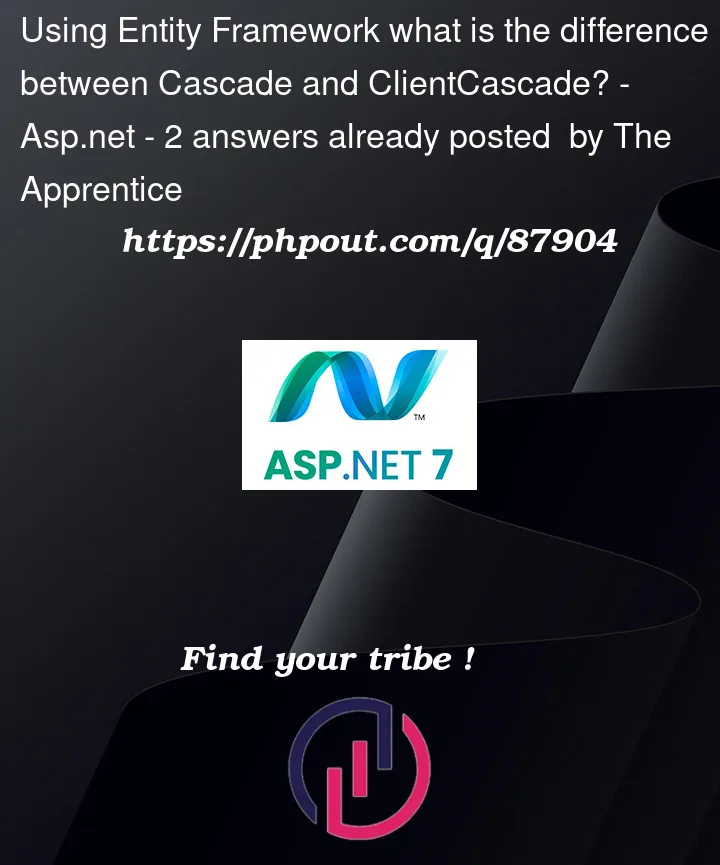I am learning C# and how to use Entity Framework. I believe that I know what is Cascade, Restrict, NoAction and SetNull behaviors.
But there are other behaviors with the prefix Client:
I would like to understand what are the difference between them and when should I use ClientCascade instead of Cascade or ClientNoAction instead of NoAction.





2
Answers
the short answer is– when
dependent/ref. entitiesareloaded/cachedin memory, thecascade deleteactionfailson the main entity – because aCYCLIC ref. LOCK.ClientCascadeallows theDBContextto delete entities even if there is aCYCLIC ref. LOCKThe Context deletes the entities it tracks, when we delete the parent.
Cascade option creates a migration script with
ON DELETE CASCADE, whileClientCascadecreates a migration script withON DELETE NO ACTION.Cascade is the default behavior, when using the required relationship i.e
Foreign keyis Not NullableUntracked entities if any are deleted if the
ON DELETE CASCADEis setup in the database. If not results in aFOREIGN KEY violation.Not all databases support Cascade or does not support fully. Especially if there are cycles in relationships. Use
ClientCascadeand load all related entities before deleting the parent. The context will perform the Cascade Delete on the client-side.also read:
https://learn.microsoft.com/en-us/ef/core/saving/cascade-delete